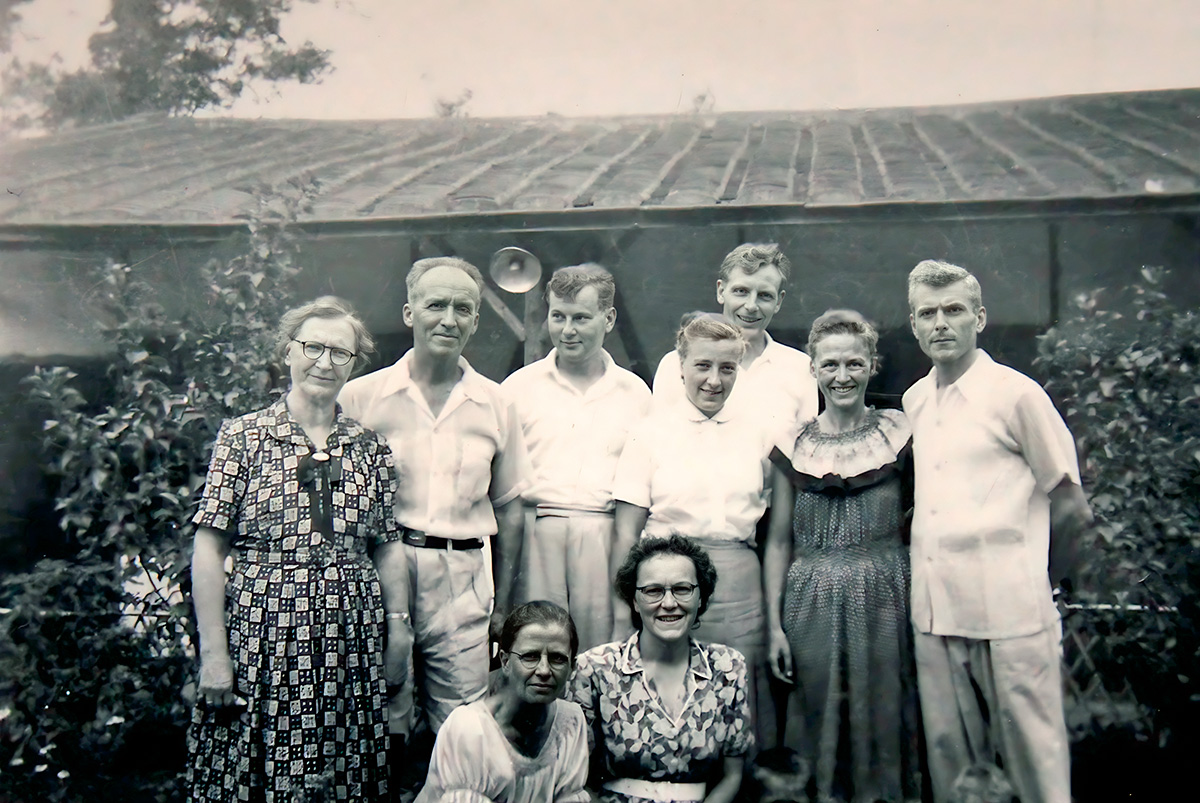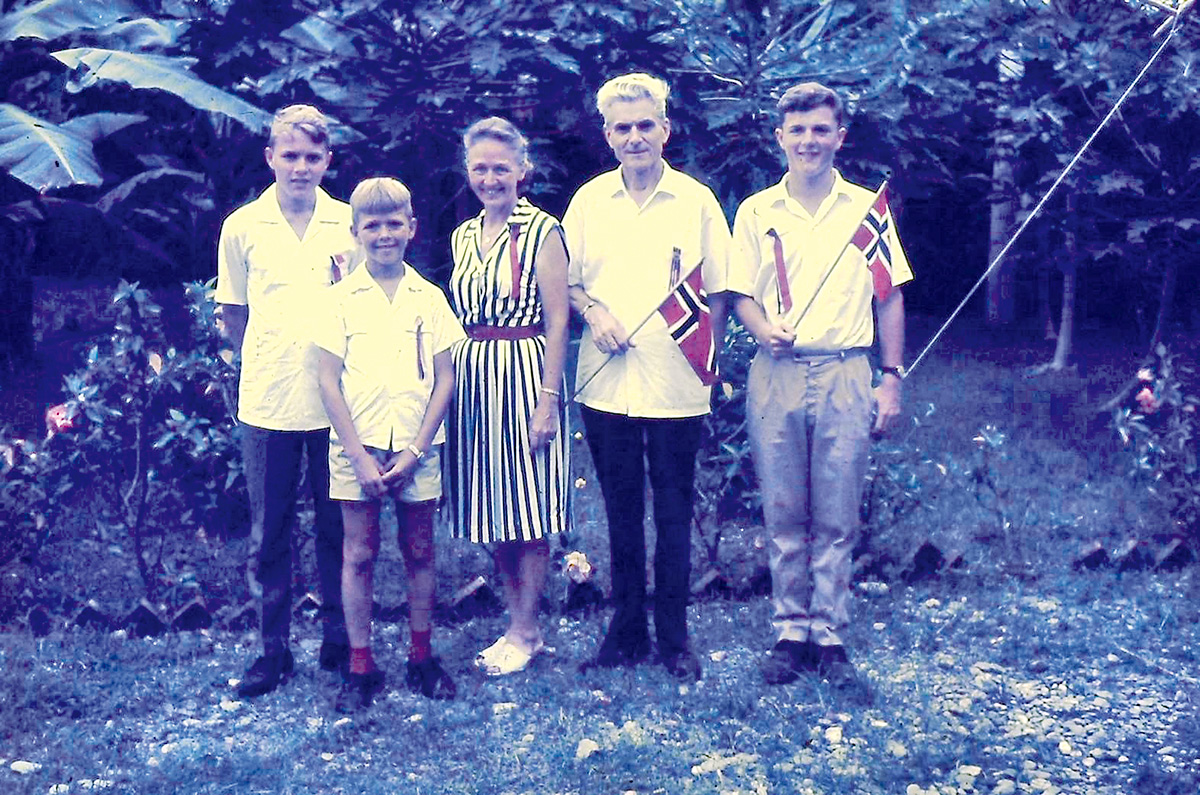
Saving Every Penny for the Lord - My Father Kristoffer Fortland【Parent-Child Reading Guide】
點閱次數:407
Kristoffer Fotland's Childhood
On March 10, 1905, Kristoffer Fotland was born in Time, in the southwestern part of Norway. His parents were farmers, and their farm had a water mill for grinding flour. Fotland's mother gave birth to twelve children, eleven of whom survived to adulthood, and Fotland was one of the middle children.
Fotland's father built a house on their farm for pastors and itinerant speakers to preach in. From a young age, Fotland was inspired by missionary work.
To become a missionary, Fotland left home to study at the University of Oslo Medical School. He graduated in 1932 and worked at Ullevål University Hospital and the National Hospital of Norway.
Mission Work in Kalgan (Changchiakou), China (1935-1946)
When Fotland learned from the Norwegian Mission Alliance (NMA) that a hospital (known in Chinese as Poai Hospital) in Kalgan was in need of doctors, he set off on a missionary journey in 1935 at the age of thirty and became the only doctor there, working through eleven years of continuous warfare. Fotland narrowly escaped death and returned to Norway in 1946 after the war.
Fotland continued to work in a hospital and raised funds for missions in China. On February 23, 1947, he was invited to a nurse's birthday party, where he met and fell in love with the birthday girl's sister, Astri Graff. They married in December 1948.
Mission Work in Taiwan (1949-1981)
Newlyweds Fotland and Astri set off for China again, but upon arriving, they learned that the Communist Party had closed the hospitals and churches. At that time, missionary Guri Odden in Taiwan mentioned that Mackay Hospital needed Mandarin-speaking doctors. Thus, the Fotlands came to Taiwan in 1949, first serving at Mackay Memorial Hospital and then providing mobile medical services in the mountain aboriginal communities.
In 1954, Dr. Olav Bjørgaas and his wife arrived in Taiwan. After welcoming them, the Fotlands moved to Hsinchu to assist in missionary work. In 1956, the Bethesda Clinic established by the Evangelical Covenant Church in 1953 was passed on to NMA and renamed Pingtung Christian Clinic. Fotland and Bjørgaas treated children with leprosy and tuberculosis, providing free medical services in remote areas like Wutai, Haocha, and Mutan villages.
In 1959, during a polio outbreak, Fotland and Bjørgaas went out to find children crawling on the ground or abandoned, bringing them back for free treatment. Fotland performed at least two surgeries daily. In 1960, he assisted in surgeries at Puli Christian Hospital in Nantou. In 1961, the Children's Sanatorium at Pingtung Christian Clinic opened, treating children with polio and tuberculosis. In 1962, they imported the Sabin polio vaccine from the United States and vaccinated 4,000 children in Pingtung for free. The following year, the two doctors established a factory to make crutches and braces and collaborated with Jenai Elementary School in Pingtung to create a special class for children with physical disabilities.
In 1965, Pingtung Christian Clinic was upgraded to Pingtung Christian Hospital. As the hospital director, Fotland was busy treating patients daily and providing medical support in other areas. In 1967, Fotland even traveled to Chinmen to treat children with polio. In the 1970s, he received a USD 3,000 personal check from a childhood friend, which he immediately donated to the NMA. After returning to Norway in 1968, he continued to live a simple life. In 1974, he self-funded a return to Taiwan to continue performing surgeries. In 1975, he was made a Knight (First Class) of the Order of St. Olav, one of the highest honors bestowed by the King of Norway.
In 1978, Fotland's second son, Geir Yeh Fotland, returned to Taiwan as a missionary after completing his degree in physical therapy in Norway, working alongside his father at Pingtung Christian Hospital. At 75, Fotland was still able to perform surgeries smoothly. However, outside the operating room, he would forget what surgeries he had just performed. In 1980, Fotland officially retired.
In 1993, during the 40th anniversary celebration of Pingtung Christian Hospital, 88-year-old Fotland was invited to return to Taiwan. When asked if any patients needed his services, the hospital, considering his age, replied "no." Fotland responded, "If I'm only going back for the celebration, that's such a waste! Save the money and use it for the hospital's most needed areas."
In 1997, Fotland, Bjørgaas, and nurse Kari Joten received the 7th Medical Contribution Award. In 2005, Fotland became the oldest member of the Norwegian Medical Association and passed away in 2006 at the age of 101.

The Bjørgaases (3rd and 4th from left), Bjarne Gislefoss (3rd from right), the Fotlands (1st and 2nd from right), and Gudrun Stengel (front left)
Geir's Memories of His Father
The story was inspired by Geir Yeh Fotland’s childhood memories. He is the second son of Kristoffer and Astri, and he always remembered that their bedtime stories were Bible stories read by their father who lived a very disciplined life: "He woke up at 5 in the morning, read the Bible, went running, fed the goat, had breakfast, packed a lunch, and then went to work at the hospital…After Sunday worship, my mother would go straight home to cook, while my father took us biking through the streets and alleys, exploring different routes. This was something the Bjørgaas children envied. But me and my brothers envied them because their father would play on the floor with them."
Geir said, "Our breakfast was fresh goat milk with rice and bananas. My mother preferred Western food, so she ate bread for breakfast, while my father liked Chinese food, probably because it was cheaper." He was generous and compassionate towards his patients but extremely frugal with himself. To improve hospital facilities and help patients who couldn't afford medical care, Fotland saved on every small detail, even saving the last bit suture threads for future use.
Geir recalls a documentary where nurses mentioned Fotland during lunchtime: "He often stayed in the surgical area to eat his lunch to avoid having to scrub in and out again. If he ate with everyone else, he would share his food with patients. He was very thin."
Reflecting on his father's life, Geir says, "As a child, I always felt that my father cared more for his patients than for us. Once, a patient came to the hospital looking for him for surgery, but he had already retired and left the hospital. The patient didn’t go for other doctors but went away. Seeing how important my father was to the patients, I finally understood and forgave him." Geir felt relieved about how his father was occupied when he was little. He is grateful to God for granting Dr. Kristoffer Fotland such a long life, allowing them to enjoy many years together after his retirement.

Mr. and Mrs. Fotland (2nd and 3rd from right) and their three sons
Photos provided by the Fotlands.